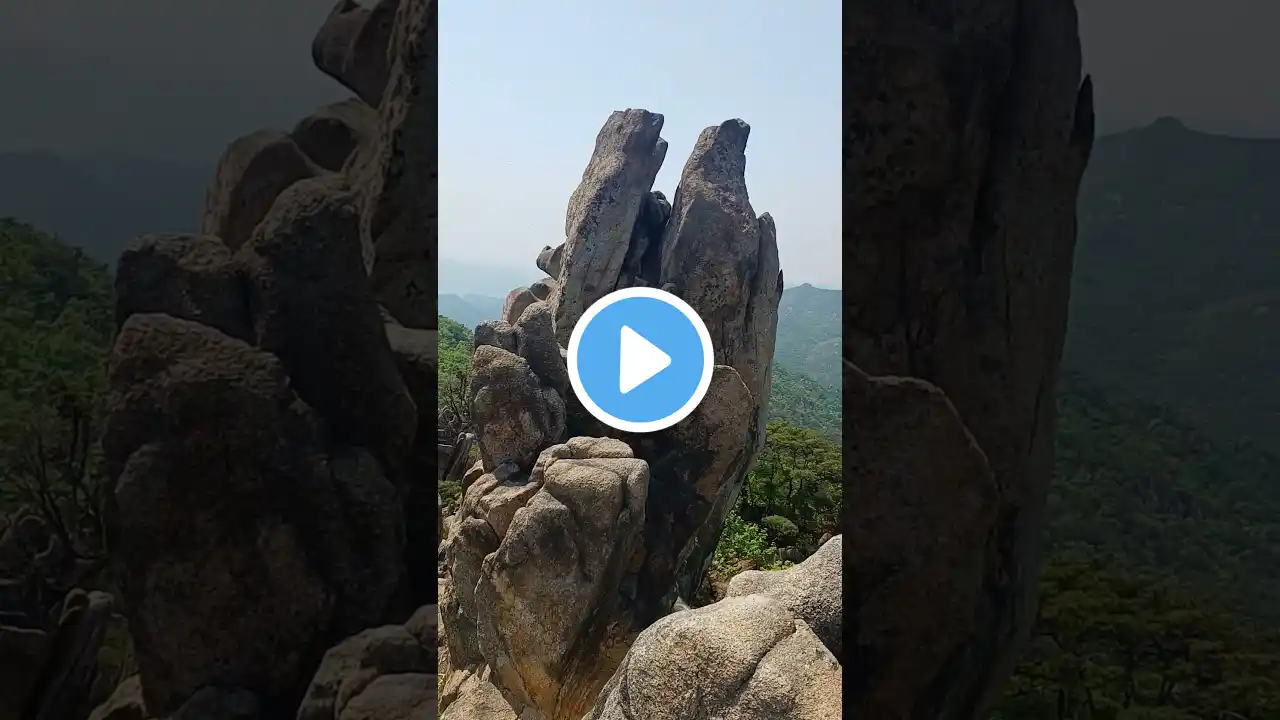
백도의 지구여행(Baek Do’s Global Trip): 총동창 산우회 대경합동산행 관악산 등반 제4부 요사채 편액 및 연주대 조망 편(2024.10.19)
백도의 지구여행(Baek Do’s Global Trip):계성 총동창 산우회 대경(大京)합동산행 관악산 등반 제4부 요사채 편액 및 연주대 조망 편(Gyeseong General Alumni Association Mountain Club Daegyeong(大京) Joint Mountain Climbing Gwanaksan Mt Part 4 Yosachae plaque and the View of Yeonjudae)(2024 10 19 ) (1)종무소 우측 첫째 방 편액 무량수(无量壽) - 완당 김정희가 쓴 편액 불교용어로 '아미타불 및 그 땅에 사는 백성의 수명은 헤아릴 수 없음'을 뜻한다 ‘없다는 뜻은 ’無‘이고, ’无‘는 전신을 그린 사람(大)의 머리 위에 ’一‘을 그려 머리가 보이지 않게 하였다 하늘 天자를 닮아 하늘의 텅빈 ’空‘과 같은 뜻으로 불교의 ’空‘의 의미와 상통한다 추사고택 승련노인(勝漣老人) 무량수 편액, 제주도로 귀양갈 때 쓴 해남 대흥사 무량수각(1840년) 현판 글씨에서 묻어나오는 귀족풍의 기름진 서체는 귀향 후 쓴 화암사의 ’무량수각(1846년)‘과 연주암의 ’무량수;의 글씨처럼 담박하고 고졸함이 묻어나는 아름다운 서체로 변해간 듯하다 (The plaque on the first room to the right of the Jongmuso office reads, “Muryangsu (无量壽)” - a plaque written by Wandang Kim Jeong-hui In Buddhist terms, it means “the lifespan of Amitabha Buddha and the people living in that land is immeasurable ” The meaning of “nothing” is “無,” and “无” is made by drawing “一” above the head of a person (大) who is drawing the whole body so that the head is not visible It resembles the character for “heaven” and has the same meaning as the empty “空” of the sky, which is in line with the meaning of “emptiness” in Buddhism The Muryangsu plaque by Seungnyeonnoin (勝漣老人) at Chusa’s House, the greasy, aristocratic font that appears in the signboard of Muryangsu Pavilion at Daeheungsa Temple in Haenam that he wrote when he was exiled to Jeju Island, seems to have transformed into a beautiful, simple font with a hint of sophistication, like the calligraphy of “Muryangsu Pavilion” at Hwaamsa Temple and “Muryangsu” at Yeonjuam Temple that he wrote after returning home ) ★동양미술작가 손태호 무량수와 자화상에서 발췌 (2)요사채 우측 첫째 방 편액 산기일석가(山气日夕佳) -도연명(陶淵明)의 한시 음주(飮酒) 20수중 제5수에 나오는 산기일석가(山气日夕佳) 한 구절을 민족대표 33인 중 한 분인 위창 오세창(葦滄 吳世昌: 1864∼1953)선생이 쓴 편액(The plaque on the first room on the right side of the Yosaechae, “Sangiilseokga (山气日夕佳)” - A verse from the 5th of Tao Yuanming’s 20 poems on drinking wine, “Sangiilseokga (山气日夕佳)”, written by Mr Oh Se-chang (1864∼1953), one of the 33 national representatives ) 結廬在人境(결려재인경) 사람 사는 곳에 집을 짓고 살아도, 結廬 在 人境 jiélú zài rénjìng 而無車馬喧(이무거마훤) 시끄러운 마차소리 들리지 않네 而 無 車 馬 喧 ér wú 車 mǎ xuān 問君何能爾(문군하능이) 그대에게 묻노니 “어찌해야 그럴 수 있소?” 問君何 能爾 wènjūnhé néngěr 心遠地自偏(심원지자편) 마음이 세속에서 멀어지니 사는 곳이 절로 외지네 心遠 地 自偏 xīnyuǎn de zìpiān 採菊東籬下(채국동리하) 동쪽 울타리 아래서 국화를 따며, 採菊東 籬下 cǎijúdōng líxià 悠然見南山(유연견남산) 한가로이 남산을 바라보네 悠然 見 南山 yōurán jiàn nánshān 山氣日夕佳(산기일석가) 산의 정취는 저녁노을로 아름답고, 山气 日夕 佳 shānqì rìxī jiā 飛鳥相與還(비조상여환) 날던 새들은 서로 짝을 지어 둥지로 돌아오네 飛鳥 相與還 fēiniǎo xiāngyǔhái 此中有眞意(차중유진의) 이런 모습 속에 참된 뜻이 있으니, 此中 有眞意 cǐzhōng yǒuzhēnyì 欲辨已忘言(욕변이망언) 그것을 말하려다 이미 할 말을 잊었네 欲 辨 已 忘言 yù biàn yǐ wàngyán (Even if I build a house where people live, I don’t hear the noisy sound of carriages I ask you, “How can this be?” When my heart is distant from the world, my home naturally becomes a foreign land Picking chrysanthemums beneath the eastern fence, Leisurely gazing at the southern mountains The mood of the mountains is beautiful in the evening glow, The birds that were flying pair up and return to their nests There is true meaning in this sight, I tried to say it but I have already forgotten what I was going to say ) (3)영산전:연주암의 특이점은 나한기도 제일도량이란 것이다 영산전에는 1,250나한을 모시고 있다 (Yeongsanjeon: The unique feature of Yeonjuam is that it is the first Buddhist Prayer Temple to pray to Arhats Yeongsanjeon houses 1,250 Arhats ) (4)금륜보전(삼성각) 현판:근대 서화가 해강(海岡) 김규진(1868~1933)이 썼다 그는 18세 때 청나라에 유학하여 견식을 넓혔으며 조석진, 안중식과 함께 서화연구회를 창설하고 후진을 양성했다 그는 큰 글씨를 잘 썼으며, 묵란, 묵죽에 뛰어나 죽란보를 남겼다 (The signboard of Geumryunbojeon (Samseonggak): Written by Haegang (海岡) Kim Gyu-jin (1868-1933), a modern calligrapher At the age of 18, he studied abroad in the Qing Dynasty to broaden his horizons, and together with Jo Seok-jin and An Jung-sik, he founded the Calligraphy and Painting Research Association and nurtured future generations He was good at large-scale calligraphy, excelled in ink calligraphy and ink bamboo, and left behind bamboo calligraphy ) (5)십이지(十二支) 삼층석탑:기단에는 십이지 동물상을 새겨 놓았고, 1층 탑신에는 석가모니불, 아미타불, 관세음보살, 지장보살님을 모시고 있다 (Twelve Zodiac Three-Story Stone Pagoda: The pedestal is engraved with the animals of the twelve zodiac signs, and the first floor of the tower enshrines Shakyamuni Buddha, Amitabha Buddha, Avalokitesvara Bodhisattva, and Ksitigarbha Bodhisattva )
















